Effect of Boron Compounds on Properties of Chinese Fir Wood Treated with PMUF Resin
-
Abstract: Plantation Chinese fir wood was modified by low molecular weight phenol melamine urea formaldehyde (PMUF) resin and boron compounds (BB) through a progressive gradual infiltration process. The results showed that the limiting oxygen index (LOI) values, density, dimensional stability and static flexural properties of the PMUF resin treated wood gradually improved with the increase of resin solid content. When boron compounds were additionally introduced into the PMUF resin, the density and the LOI values of the samples of compound modification increased, whereas the anti-swelling efficiency, the modulus of rupture and impact toughness decreased by more than 17.6%, 10.1% and 42.9%, respectively. It was demonstrated by X-ray diffraction and Fourier transform infrared spectroscopy that boron compounds could improve the crystallinity of resin modified samples and did not have a chemical reaction with resin or wood. Scanning electron microscope analysis indicated boron compounds made the microstructure of the resin polymers loose, influencing the mechanical properties and dimensional stability of resin modified wood.
-
Key words:
- wood /
- resin /
- boron compounds /
- dimensional stability /
- mechanical properties
-
Table 1. Physical properties of untreated and modified wood samples
Sample PMUF (wt%) BA+BX (wt%) AD (%) WPG (%) Density (g/cm3) Untreated 0 0 - - 0.366±0.016 BB 0 6 225.5±8.6 9.2±0.5 0.401±0.015 P10 10 0 253.5±10.3 29.5±1.3 0.435±0.014 P20 20 0 261.7±13.9 59.6±2.9 0.529±0.013 P30 30 0 255.1±10.2 79.0±2.9 0.602±0.010 PB10 10 6 259.2±11.3 37.2±1.6 0.467±0.010 PB20 20 6 267.9±14.3 66.3±3.4 0.557±0.010 PB30 30 6 253.2±11.7 88.3±3.7 0.643±0.017 Notes: BA+BX is 2% boric acid + 4% borax; AD is absorption dose; WPG is weight percent gain; BB is boron compounds modified; P10, P20 and P30 are 10%, 20% and 30% solid content PMUF modified; PB10, PB20 and PB30 are 10%, 20% and 30% solid content PMUF with boron compounds modified. The same below. -
Baysal E, 2002. Determination of oxygen index levels and thermal analysis of scots Pine (Pinus sylvestris L.) impregnated with melamine formaldehyde-boron combinations. Journal of Fire Sciences, 20(5): 373–389. DOI: 10.1177/ 0734904102020005485. Cavdar A D, Mengeloğlu F, Karakus K, 2015. Effect of boric acid and borax on mechanical, fire and thermal properties of wood flour filled high density polyethylene composites. Measurement, 60: 6–12. DOI: 10.1016/j. measurement. 2014.09.078. Cave I D, 1997. Theory of X-ray measurement of microfibril angle in wood. Wood Science and Technology, 31(3): 143–152. DOI: 10.1007/BF00705881. Chai Y B, Liu J L, Zhao Y, et al., 2016. Characterization of modified phenol formaldehyde resole resins synthesized in situ with various boron compounds. Industrial & Engineering Chemistry Research, 55(37): 9840–9850. DOI: 10.1021/acs. iecr.6b02156. Chen H Y, Miao X W, Feng Z F, et al., 2014. In situ polymerization of phenolic methylolurea in cell wall and induction of pulse-pressure impregnation on green wood. Industrial & Engineering Chemistry Research, 53(23): 9721–9727. DOI: 10.1021/ie5006349. Deka M, Saikia C N, 2000. Chemical modification of wood with thermosetting resin: effect on dimensional stability and strength property. Bioresource Technology, 73(2): 179–181. DOI: 10.1016/s0960-8524(99)00167-4. Deka M, Saikia C N, Baruah K K, 2002. Studies on thermal degradation and termite resistant properties of chemically modified wood. Bioresource Technology, 84(2): 151–157. DOI: 10.1016/s0960-8524(02)00016-0. Furuno T, Imamura Y, Kajita H, 2004. The modification of wood by treatment with low molecular weight phenol-formaldehyde resin: a properties enhancement with neutralized phenolic-resin and resin penetration into wood cell walls. Wood Science and Technology, 37(5): 349–361. DOI: 10.1007/s00226-003-0176-6. Gao M, Zhu K, Sun Y J, et al., 2004. Thermal degradation of wood treated with amino resins and amino resins modified with phosphate in nitrogen. Journal of Fire Sciences, 22(6): 505–515. DOI: 10.1177/0734904104043031. Hazarika A, Maji T K, 2013. Synergistic effect of nano-TiO2 and nanoclay on the ultraviolet degradation and physical properties of wood polymer nanocomposites. Industrial & Engineering Chemistry Research, 52(38): 13536–13546. DOI: 10.1021/ie401596h. Hazarika A, Maji T K, 2014. Properties of softwood polymer composites impregnated with nanoparticles and melamine formaldehyde furfuryl alcohol copolymer. Polymer Engineering & Science, 54(5): 1019–1029. DOI: 10.1002/pen.23643. Islam M S, Hamdan S, Jusoh I, et al., 2011. Dimensional stability and dynamic young's modulus of tropical light hardwood chemically treated with methyl methacrylate in combination with hexamethylene diisocyanate cross-linker. Industrial & Engineering Chemistry Research, 50(7): 3900– 3906. DOI: 10.1021/ie1021859. Jiang J X, Li J Z, Hu J, et al., 2010. Effect of nitrogen phosphorus flame retardants on thermal degradation of wood. Construction and Building Materials, 24(12): 2633–2637. DOI: 10.1016/j.conbuildmat.2010.04.064. Jiang T, Feng X H, Wang Q W, et al., 2014. Fire performance of oak wood modified with N-methylol resin and methylolated guanylurea phosphate/boric acid-based fire retardant. Construction and Building Materials, 72: 1–6. DOI: 10.1016/ j.conbuildmat.2014.09.004. Kizilcan N, Dinçer P, 2013. In situ modification of cyclohexanone formaldehyde resin with boric acid for high-performance applications. Journal of Applied Polymer Science, 129(5): 2813–2820. DOI: 10.1002/app.38951. Lang Q, Bi Z, Pu J W, 2015. Poplar wood-methylol urea composites prepared by in situ polymerization. II. Characterization of the mechanism of wood mod ification by methylol urea. Journal of Applied Polymer Science, 132(41): 42406 DOI: 10.1002/app.42406. Leemon N F, Ashaari Z, Uyup M K A, et al., 2015. Characterisation of phenolic resin and nanoclay admixture and its effect on impreg wood. Wood Science and Technology, 49(6): 1209–1224. DOI: 10.1007/s00226-015-0754-4. Lin Q J, Chen N R, Bian L P, et al., 2012. Development and mechanism characterization of high performance soy-based bio-adhesives. International Journal of Adhesion and Adhesives, 34: 11–16. DOI: 10.1016/j.ijadhadh.2012.01.005. Liu R, Cao J Z, Xu W Y, et al., 2012. Study on the anti-leaching property of Chinese fir treated with borate modified by phenol- formaldehyde resin. Wood Research, 57(1): 111–120. DOI: 10.1080/02773813.2012.659320. Lopes D B, Mai C, Militz H, 2015. Mechanical properties of chemically modified portuguese pinewood. Maderas Ciencia Y Tecnologia, 17(1): 179–194. DOI: 10.4067/s0718- 221x2015005000018. Pandey K K, 1999. A study of chemical structure of soft and hardwood and wood polymers by FTIR spectroscopy. Journal of Applied Polymer Science, 71: 1969–1975. DOI: 10.1002/(SICI)1097-4628(19990321)71:12 < 1969::AID-APP6 > 3.0.CO; 2-D. Tomak E D, Cavdar A D, 2013. Limited oxygen index levels of impregnated Scots pine wood. Thermochimica Acta, 573: 181–185. DOI: 10.1016/j.tca.2013.09.022. Wang J G, Jiang N, Jiang H Y, 2010. Micro-structural evolution of phenol-formaldehyde resin modified by boron carbide at elevated temperatures. Materials Chemistry and Physics, 120(1): 187–192. DOI: 10.1016/j.matchemphys.2009.10.044. Xie Y, Krause A, Mai C, et al., 2005. Weathering of wood modified with the N-methylol compound 1, 3-dimethylol- 4, 5-dihydroxyethyleneurea. Polymer Degradation and Stability, 89(2): 189–199. DOI: 10.1016/j.polymdegradstab.2004. 08.017. Xie Y J, Krause A, Militz H, et al., 2007. Effect of treatments with 1, 3-dimethylol-4, 5-dihydroxy-ethyleneurea (DMDHEU) on the tensile properties of wood. Holzforschung, 61(1): 43–50. DOI: 10.1515/hf.2007.008. Yan Y T, Dong Y M, Li J Z, et al., 2015. Enhancement of mechanical and thermal properties of Poplar through the treatment of glyoxal-urea/nano-SiO2. RSC Advances, 5(67): 54148–54155. DOI: 10.1039/c5ra07294h. Zhang M, Xu Y, Wang S L, et al., 2013. Improvement of wood properties by composite of diatomite and "phenol-melamine- formaldehyde" co-condensed resin. Journal of Forestry Research, 24(4): 741–746. DOI: 10.1007/s11676-013-0413-2. -



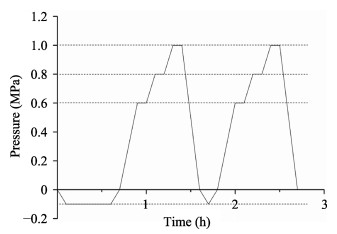
 下载:
下载:
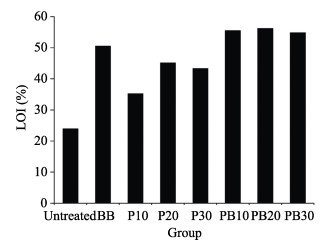

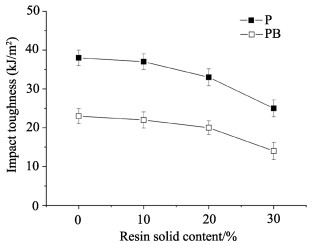
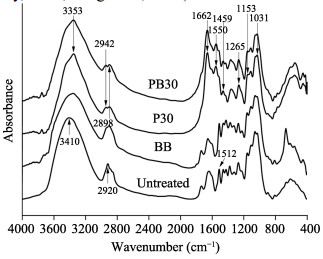
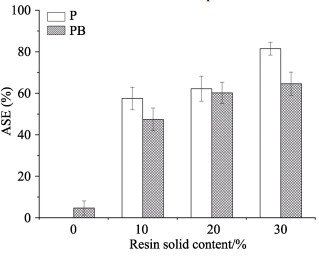
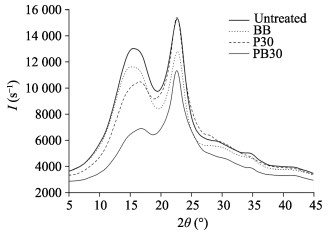
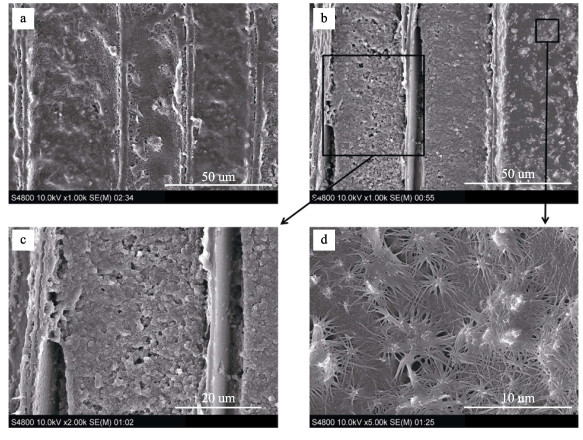

 WeChat: JournalBandB
WeChat: JournalBandB